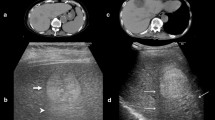Abstract:
In the past decade, ultrasonography and magnetic resonance cholangiography have become useful modalities for the screening of bile duct cancer. Intraductal ultrasonography, using a thin-caliber (2.0 to 2.4 mm in diameter) and high-frequency (15 to 20 MHz) probe, has become a promising modality in assessing locoregional staging. For interventional therapy of unresectable bile duct carcinoma, metallic stents also became an excellent modality. However, tumor ingrowth and overgrowth into the mesh of stents are problems to be solved, and external radiation therapy is widely conducted to control the tumor. To improve the limitations of external radiation, brachytherapy, photodynamic therapy, and microwave coagulation therapy are conducted. However, these modalities are available in only a limited number of institutions even now. To predict the prognosis of the patients, approaches using molecular biology must be established.
Similar content being viewed by others
Author information
Authors and Affiliations
Additional information
Received: October 26, 1999 / Accepted: November 26, 1999
Rights and permissions
About this article
Cite this article
Tamada, K., Sugano, K. Diagnosis and non-surgical treatment of bile duct carcinoma: developments in the past decade. J Gastroenterol 35, 319–325 (2000). https://doi.org/10.1007/s005350050355
Issue Date:
DOI: https://doi.org/10.1007/s005350050355




